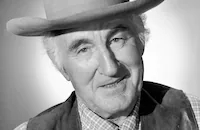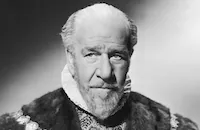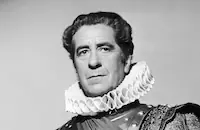The Private Lives of Elizabeth and Essex

Brief Synopsis
Cast & Crew
Michael Curtiz
Bette Davis
Errol Flynn
Olivia De Havilland
Donald Crisp
Alan Hale
Film Details
Technical Specs

Synopsis
In London, in 1596, the Earl of Essex returns from his victory at Cadiz to be greeted by the admiration of Lady Penelope Gray and other ladies of the court and the jealousy of Sir Walter Raleigh and Sir Robert Cecil. Queen Elizabeth, although in love with Essex, fears his thirst for power and so castigates him for the high cost of his empty victory. Proud and headstrong, Essex retreats to his ancestral home at Wonstead and refuses to return to court. His friend, Francis Bacon, seeking to reconcile the battling lovers, suggests that Elizabeth appoint Essex Master of the Ordnance in order to quell the uprising in Ireland led by the Earl of Tyrone. To serve his country, Essex returns to court where he falls victim to the intrigues of Raleigh and Cecil who conspire to drive a wedge between him and the queen by sending Essex to Ireland. Against Elizabeth's wishes, Essex leads the army to Ireland, where his pleas for help go unanswered and thus, facing suffering and death, he is forced to surrender to Tyrone. Unknown to either Essex or Elizabeth, Cecil, Raleigh and Penelope have been intercepting the lovers' letters, and so Essex returns to England, believing that he has been betrayed and abandoned by his queen. Essex and his men take the palace by storm, and although the court conspiracy is finally brought to light, Essex still refuses to subordinate himself to Elizabeth's throne and, thirsting for power, demands that she share it with him. Elizabeth refuses and orders him arrested and executed. In one final meeting, both lovers refuse to relinquish their hold on the throne, and therefore bid each other a final farewell as Essex goes to his death.

Director

Michael Curtiz
Cast

Bette Davis

Errol Flynn

Olivia De Havilland

Donald Crisp

Alan Hale

Vincent Price

Henry Stephenson

Henry Daniell

James Stephenson

Nanette Fabares

Ralph Forbes

Robert Warwick

Leo G. Carroll
Crew
Leo F. Forbstein
Hugo Friedhofer
W. Howard Greene
Anton Grot
Byron Haskin
Ali Hubert
Natalie Kalmus
H. F. Koenekamp
Erich Wolfgang Korngold
Stanley Logan
Robert Lord
Aeneas Mackenzie
Owen Marks
Frank Mattison
Orry-kelly
Morgan Padelford
Sol Polito
Norman Reilly Raine
C. A. Riggs
Milan Roder
Sherry Shourds
Jack L. Warner
Perc Westmore

Photo Collections
Videos
Movie Clip



Trailer
Hosted Intro



Film Details
Technical Specs

Award Nominations
Best Art Direction
Best Cinematography
Best Score
Best Sound
Best Special Effects
Articles
The Private Lives of Elizabeth and Essex
Though promoted as a historical romance, there was little love between Bette Davis and Errol Flynn on the set of the film. Reportedly, Davis was jealous of Flynn because he was the highest paid star at Warners at the time yet she was the one who gave the studio prestige through her Oscar nominated performances. She also had requested and been denied Laurence Olivier for the role of Essex yet she would later state that during her scenes with Flynn, she would pretend she was acting with Olivier. Flynn had his own issues with Davis. He disliked her domineering personality and felt his own acting suffered in comparison to hers. To combat this unpleasant situation he demanded, as the top-paid star, to have the title changed to The Knight and the Lady to reflect the importance of his role. When Davis heard about this, she threatened to walk off the set but the studio remained committed to the original title.
The conflict between Davis and Flynn reached a climax during the filming of the scene where Essex defies the Queen and is slapped by her. According to Flynn in his autobiography, My Wicked, Wicked Ways, the actor recalled that when Davis hit him during the first take, "My jaw went out. I felt a click behind my ear and I saw all these comets and shooting stars, all in one flash. It didn't knock me to the ground. She had given me that little dainty hand, laden with a pound of costume jewelry, right across the ear. I felt as if I were deaf." Flynn would later get his revenge in a scene where he positioned his hand so Davis would run into it: "It went sailing right through her Elizabethan dresses, slappo, smack on her Academy Award behind. She went about two feet off the ground." Despite all the animosity between the two actors, however, Flynn would later admit that Davis was "the greatest thing in the movies." As for Davis, she liked this role so well that she repeated her impersonation of Queen Elizabeth I in The Virgin Queen (1955) which detailed her relationship with Sir Walter Raleigh (Richard Todd).
The Private Lives of Elizabeth and Essex is undoubtedly one of the most stunningly designed Technicolor films produced by Warner Brothers. Its Academy Award nominations included Best Art Direction, Best Cinematography, Best Score, Best Sound and Best Visual Effects. Anton Grot's continuity sketches often provided direct models for director Michael Curtiz's shot placement and the cinematographers? lighting schemes in the finished film.
Born in Poland, Art Director Anton Grot (1884-1974) brought a broad interest in modern art, especially German Expressionism and abstract art, to his work in Hollywood. His taste for abstraction contributed much to the success of Busby Berkeley's musical numbers in films such as Gold Diggers of 1933 (1933) and to the classic noir-ish struggle between light and dark in the design of Mildred Pierce (1945). Likewise, his designs for The Private Lives of Elizabeth and Essex compliments and underscores the emotional nature of each scene. In Elizabeth's court, the gray walls and vast spaces underline her sense of isolation. Wooden doors with heavy carved patterns add to the sense of monumentality. Essex's residence has warmer, richer colors and a greater sense of intimacy to provide an effective contrast to the impersonality of the court. Throughout the film, the often plain walls of the sets are covered with abstract patterns of colored light and silhouettes of off screen characters. Doorways, windows and mirrors are used to frame characters within shot compositions. In the set of the Tower dungeon, especially striking are the heavy arches, which seem to weigh down upon the queen, and the staircase in the middle of the floor from which emerges not only the Earl of Essex, but the last rays of warm light before Elizabeth is sealed off permanently in her world of isolation and mistrust.
Director: Michael Curtiz
Producer: Hal B. Wallis
Screenplay: Aeneas MacKenzie, Norman Reilly Raine
Cinematography: W. Howard Greene, Sol Polito
Costume Design: Orry-Kelly
Art Direction: Anton Grot
Film Editing: Owen Marks
Music: Erich Wolfgang Korngold
Principal Cast: Bette Davis (Queen Elizabeth), Errol Flynn (Essex), Olivia de Havilland (Lady Penelope Gray), Vincent Price (Raleigh), Donald Crisp (Francis Bacon), Alan Hale (Earl of Tyrone), Henry Daniell (Sir Robert Cecil), Henry Stephenson (Lord Burghley).
C-107m. Closed captioning
By James Steffen

The Private Lives of Elizabeth and Essex
Quotes
Trivia
To give the illusion of baldness, Bette Davis shaved her head two inches in front to show a high forehead under Elizabeth's red wigs.
The play, Elizabeth the Queen, originally opened in New York on 3 November 1930 with Lynn Fontanne and Alfred Lunt as Elizabeth and Essex. The title of the movie was to be the same as the title of the play, but Errol Flynn protested that he wanted his presence acknowledged in the title. The choice of "The Knight and the Lady" upset Bette Davis, and "Elizabeth and Essex" was a book title already copyrighted. Thus the final unwieldy title was used.
Notes
The working titles of this picture were Elizabeth the Queen, The Knight and the Lady, and Elizabeth and Essex. It was also released as Elizabeth the Queen. Modern sources state that Errol Flynn insisted that the original title, Elizabeth the Queen, be changed to acknowledge his presence in the film. When The Knight and the Lady was chosen, Bette Davis threatened to walk out of the picture. Although the title Elizabeth and Essex met with everyone's approval, writer Lytton Strachey had already copyrighted a book with that title. Hence, the title The Private Lives of Elizabeth and Essex was selected. According to a pre-production news item in Hollywood Reporter, William Keighley was originally slated to direct this film, but was replaced by Michael Curtiz when Keighley went on vacation. Other news items in Hollywood Reporter note that production on the film was postponed after Errol Flynn was involved in a car accident which resulted in facial abrasions and stitches. Shooting had to be rearranged so that Flynn could recover. Another news item in Hollywood Reporter adds that the film was to have had its premiere in London, but the advent of the war forced Warner Bros. to move the premiere to Beverly Hills. This was Bette Davis's first Technicolor film. The film received the following Academy Awards: Best Art Direction (Anton Grot); Best Cinematography (Sol Polito and Howard Green); Best Original Score (Wolfgang Korngold); Best Recording (Nathan Levinson, the Recording Director at Warner Brothers); and Best Special Effects (Byron Haskin and H. E. Koenekamp). This picture also marked the adult film debut of Nanette Fabares, who subsequently changed her name to Nanette Fabray.

Miscellaneous Notes
Nominated for five 1935 Academy Awards including: Best Art Direction (Anton Grot), Best Cinematography-Color (Sol Polito, W. Howard Greene), Best Music-Scoring (Erich Wolfgang Korngold), Best Sound Recording and Best Special Effects (Byron Haskin, Nathan Levinson).
c Technicolor














